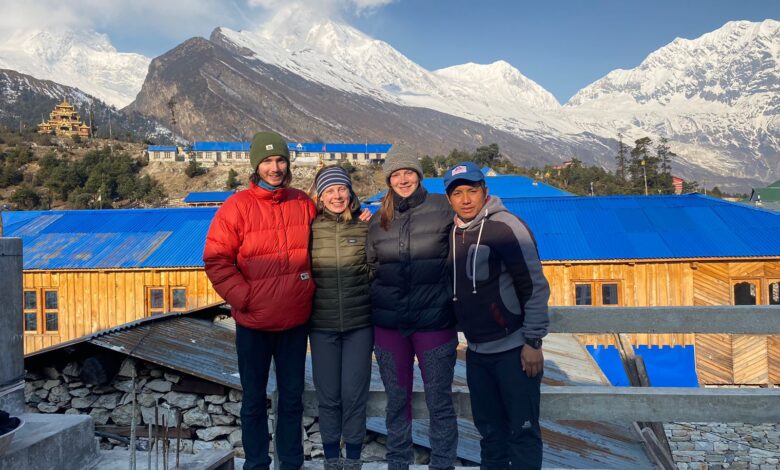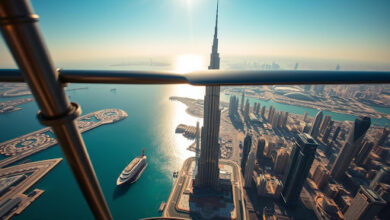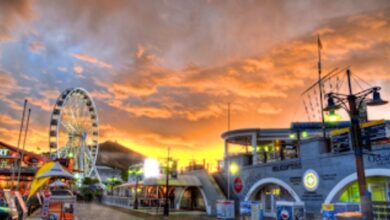Nepal Trekking Permits: Complete Guide for 2024

Trekking in Nepal is an exciting adventure that many people dream about. To protect both nature and trekkers, Nepal has a strict permit system that everyone must follow. In this easy-to-understand guide, we will explain everything you need to know about trekking permits in Nepal, including the different types, costs, and where to get them. By reading this guide, you will be ready for a smooth and legal trekking experience in Nepal. From the famous Annapurna region to the restricted areas like Upper Mustang, this guide has all the information you need.
Types of Nepal Trekking Permits You Need in 2024
Nepal has different types of permits for trekking, and each one is used for a specific purpose. What kind of permit you need depends on where you want to trek. Having the correct permits is very important to make sure your trekking experience is trouble-free. Missing a permit can lead to big fines, and officials have become stricter in recent years. Getting the right permits also helps protect Nepal’s beautiful trekking trails and natural environment.
TIMS Permit for Trekking
The Trekkers’ Information Management System (TIMS) is an important permit for most trekking routes in Nepal. TIMS keeps a record of all trekkers to help ensure their safety. It helps authorities know where trekkers are in case they need help.
- Where it Applies: You need a TIMS permit for popular trekking regions like Annapurna, Langtang, and Everest. Trekkers should carry their TIMS permit at all times, as there are regular checks along the trails. TIMS helps keep track of how many people are on the trails and makes sure everyone is safe.
- Where to Obtain: You can get a TIMS permit from the Nepal Tourism Board offices in Kathmandu or Pokhara. The offices are open throughout the week, and it’s a good idea to get your permit early to avoid any last-minute problems. You can also get TIMS permits through registered trekking agencies, which makes the process easier.
- Cost: The fee depends on whether you are trekking independently or with a group. Independent trekkers pay a bit more because of the extra paperwork. If you are trekking with an agency, they will usually handle the permit process for you.
- Cost: Independent Trekkers: $20, Organized Trekkers: $10. These fees help maintain the trekking trails and support rescue operations if needed.
National Park Permits
Many trekking routes in Nepal go through national parks, and each park requires its own entry permit. These permits help protect the parks and keep the wildlife and ecosystems safe. National park permits are important for making sure the beauty of these areas is preserved for future generations.
Popular National Parks
- Annapurna Conservation Area:
This permit is needed for the Annapurna Circuit and other treks in the Annapurna region. Annapurna is one of the most popular trekking areas, and the permit fee helps support local communities and conservation efforts.
- Sagarmatha National Park
This permit is needed for trekking to Everest Base Camp. Sagarmatha National Park is a UNESCO World Heritage Site and is famous for its amazing views and challenging trails. The fees help protect the environment and keep the trails in good condition.
- Langtang National Park
Needed for treks in the Langtang Valley. This area is known for its beautiful landscapes and rich culture. The permit fee helps protect the culture and natural beauty of this remote area.
- Costs: Usually $30 per person per park. These fees are used to maintain the trails, protect wildlife, and make sure these areas remain special places for trekkers to visit. National park permits are also important for supporting responsible tourism.
- Where to Obtain: Permits are available at the Nepal Tourism Board and at park entry points. It’s best to get your permits in Kathmandu or Pokhara to save time during your trek. You can also get permits through authorized trekking agencies, which can make things easier if you’re new to Nepal.
Restricted Area Permits
Some trekking areas in Nepal are restricted because they are close to sensitive borders or to protect local cultures. Trekkers in these areas need special permits and, in most cases, must trek with a licensed guide. Restricted area permits help limit the number of visitors and protect the unique cultures and environments of these regions.
Popular Restricted Areas
- Upper Mustang
This area is known for its unique Tibetan culture and beautiful landscapes. The permit helps control the number of visitors and protect the area’s cultural heritage.
- Manaslu Region
This region requires a restricted area permit in addition to other standard permits. The Manaslu trek is challenging but offers amazing views of the Manaslu mountain range.. The fees help support local infrastructure and conservation.
- Cost: Restricted area permits are more expensive than regular permits, with costs ranging from $70 to $500, depending on the region and season. These costs help maintain tourism in a way that protects the culture and environment. Permits are usually issued for a specific time period, and extra fees may apply if you need to extend your stay.
How to Get Trekking Permits in Nepal: Step-by-Step Guide
Where to Get Permits
You can get permits at various offices in Kathmandu and Pokhara. The main places are the Nepal Tourism Board office and the TAAN (Trekking Agencies Association of Nepal) office. These offices have staff who can help you with the permit process. It’s best to arrive early to avoid long lines, especially during busy trekking seasons.
- TIMS and National Park Permits: Available in both Kathmandu and Pokhara. If you are trekking with a group, the trekking agency can also help you get these permits. Many trekkers find it easier to use an agency, especially if they are short on time.
- Restricted Area Permits: These are only available in Kathmandu. You will need a licensed trekking agency to help with the process. Using a reliable agency is important to make sure everything goes smoothly during your trek. The agency will help you with the paperwork and make sure everything is in order.
Required Documents
To get trekking permits, you will need:
- Passport Copies: Have several copies of your passport, as you will need them for different permits. It’s also a good idea to keep an extra copy with you during the trek.
- Passport-sized Photos: You will need two to four photos for permits. These photos are used for records and identification.
- Travel Itinerary (for restricted areas): A detailed plan of your trek is needed for restricted area permits. This plan should include your route, overnight stops, and dates of travel.
Nepal Trekking Permit Costs Explained
Knowing the costs of the permits will help you plan your budget. The fees vary depending on the type of permit and where you plan to trek. It’s important to plan for these costs as part of your trekking adventure in Nepal. You should also have some extra money for unexpected expenses that might come up during your trek.
TIMS Permit Fees
- Independent Trekkers: $15. This fee helps cover administrative costs and keep track of trekkers for safety.
- Organized Trekkers: $7.50. This lower fee is for those trekking with a registered agency, which provides extra safety and support. Trekking with an organized group also means the agency will handle the paperwork, making it easier for you.
National Park Entry Fees
- Annapurna Conservation Area: $22.50. This fee helps maintain the area and support local communities. Make sure you also keep your belongings safe while trekking. Here are some helpful tips on how to secure your belongings while on the move. Annapurna is a very popular trekking destination, and the fees help protect both the environment and the people who live there.
- Sagarmatha National Park: $22.50. The fees are used to protect the special environment of the Everest region and promote sustainable tourism. The Everest area is visited by trekkers from all over the world, and keeping it beautiful is very important.
Restricted Area Permits
- Upper Mustang: $500 per person for 10 days. This high fee helps control the number of trekkers and protect the local culture. The fee also supports the development of basic infrastructure in this remote region, making it possible for trekkers to visit while keeping its unique heritage safe.
- Manaslu Region: $100 per person per week during peak season. Costs may be lower during off-peak times. Additional permits are needed for conservation areas. Trekking in the Manaslu region is tough but rewarding, and the fees help keep the area natural and safe for trekkers.
Rules & Restrictions for Trekking Permits in Nepal
Nepal has strict rules for trekking permits to keep trekkers safe and protect the natural environment. Knowing these rules will help you have a trouble-free trekking experience and ensure you respect local laws and customs. Following the rules also helps protect the trails and support local communities.
- Age Restrictions: Minors must be with an adult. Trekking can be difficult, and this rule helps keep younger trekkers safe. Kids under 16 cannot trek alone, and they must be supervised by an adult.
- Group Requirements: In restricted areas, at least two trekkers must be accompanied by a licensed guide. This is for safety in remote areas where getting help might be hard. Having a guide also helps support local jobs and ensures that trekkers respect local cultures.
- Permit Validity: Permits are valid for the length of your trek but may need to be renewed if you extend your trek. Make sure to plan carefully to avoid staying longer than your permit allows. For more information on how difficult the Annapurna Circuit trek can be, you can check out this guide. If your trek takes longer than expected, you must visit the nearest permit office for an extension, which may include extra fees.
FAQs About Nepal Trekking Permits
Can I Get a Permit on Arrival?
Yes you can get trekking permits after arrival in Kathmandu or Pokhara. But, it is best to plan ahead so you can start your trek without any delays. During peak trekking seasons, the permit offices can be busy, so getting there early will save you time.
Do I Need a Guide for Restricted Areas?
Yes, you need a licensed guide to trek in restricted areas. This is for your safety and to make sure you follow local rules. Guides know the trails, the culture, and what to do in emergencies, making them very helpful in restricted areas.
What Happens if I Trek Without a Permit?
Trekking without the right permits can lead to heavy fines, and you may not be allowed to continue your trek. Authorities often check permits, and not having one can result in serious penalties. Always carry your permits, as random checks are common, especially in popular trekking areas.


